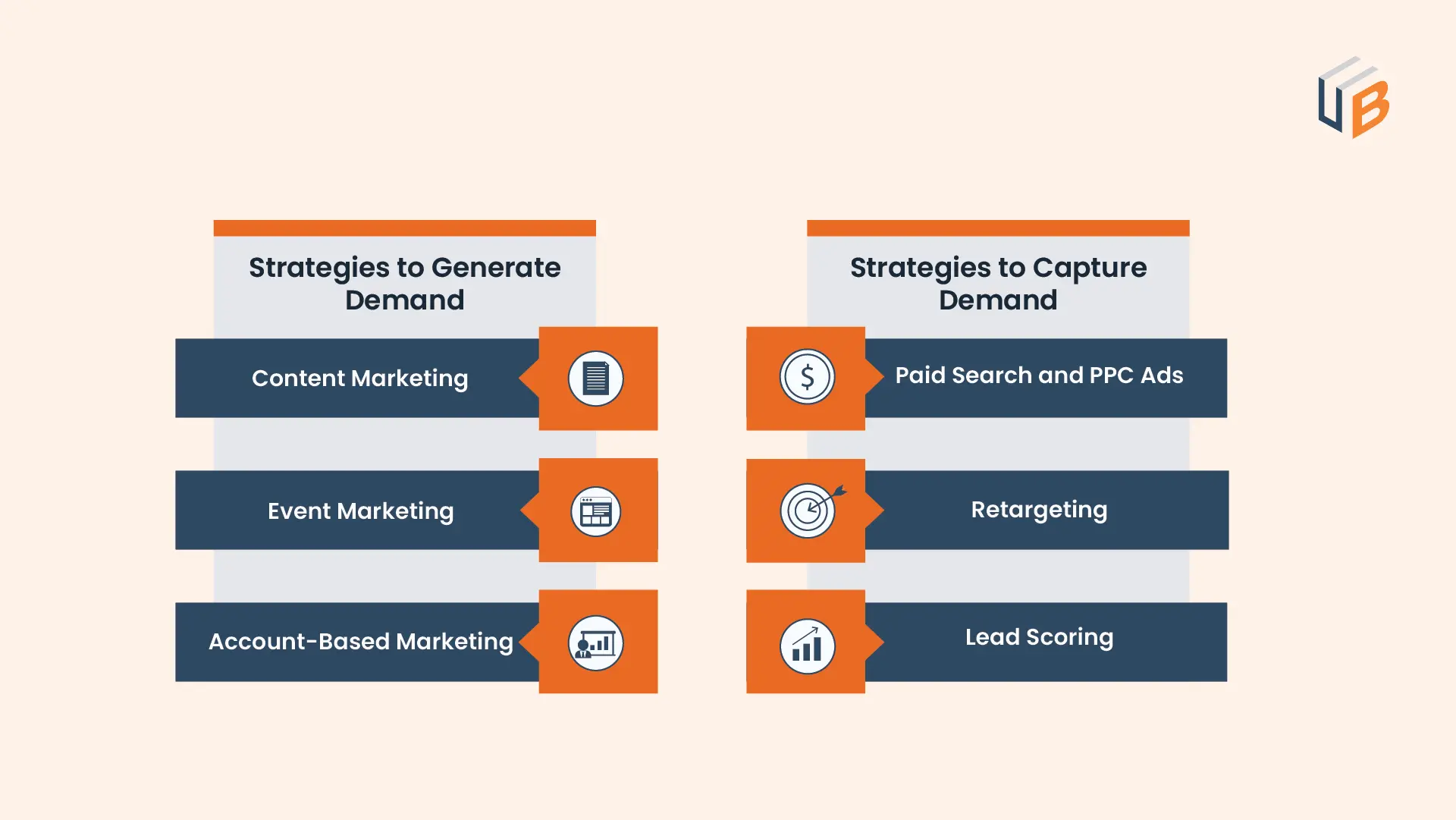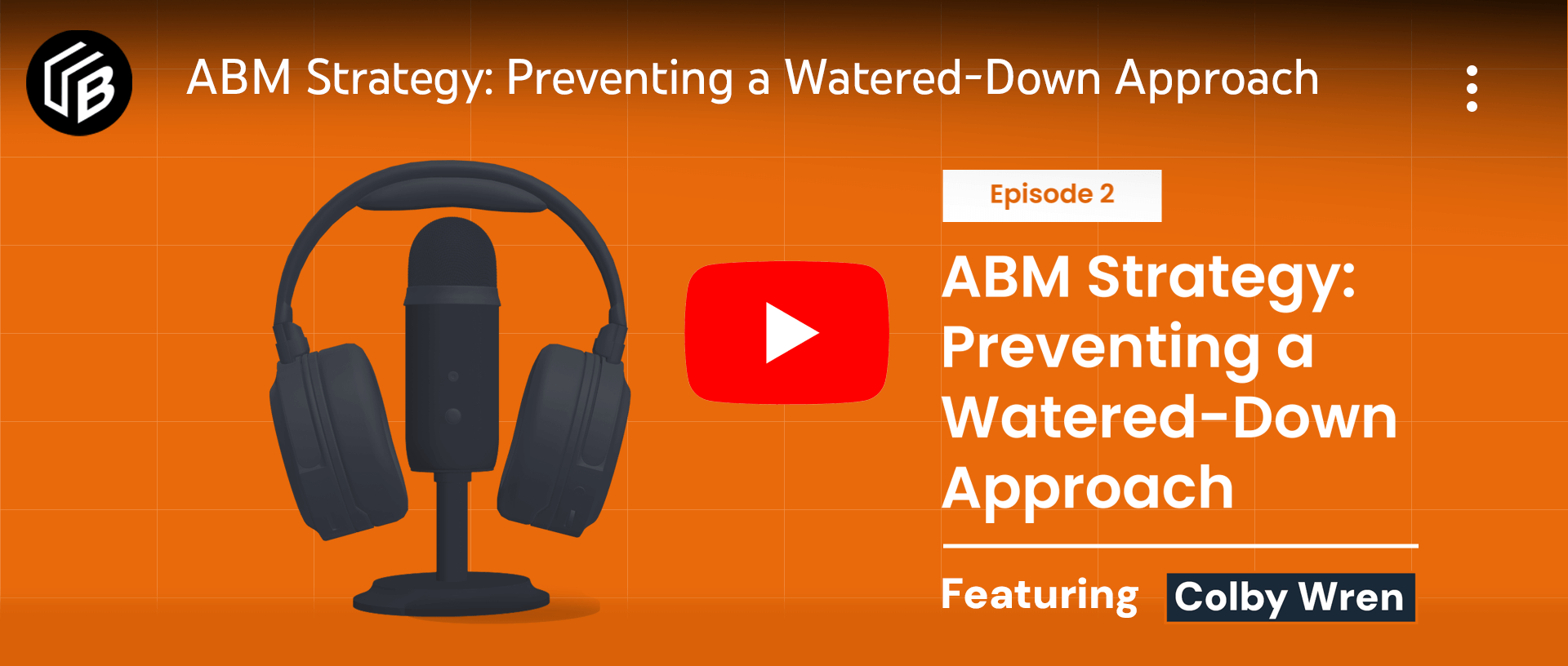
Addressing the demand dilemma—Demand Generation vs Demand Capture—is crucial to scale your B2B business.
Most B2B audiences are already aware of their problems, creating an existing demand. But if you only rely on this existing demand, you’ll eventually hit a growth plateau.
To scale your business, you need to create new demand. And this raises the question: should you focus more on generating demand or capturing generated demand?
Understanding the difference between demand generation and demand capture is key to making this decision.
Let’s dive in!
Demand Generation: What Is It and Why It Matters
Demand generation is the process of creating awareness and interest in your B2B products or services among potential customers who may not yet know they need them.
It isn’t about tricking people into buying things they don’t need. It’s about educating people on problems they might have and how your offerings can help solve those problems.
The goals of demand generation include educating the market, building brand recognition, establishing thought leadership, and nurturing long-term relationships with prospects.
Generating demand is important because it expands your potential customer base. According to the 95:5 rule, 95% of your potential market isn’t actively looking for your solution at any given time. And demand generation helps you tap into this vast pool of prospects.
It includes various demand generation strategies: Content Marketing, Social Media Marketing, Email Marketing, Content Syndication, Events and Webinars, Search Engine Optimization (SEO), Influencer Marketing, and Account-Based Marketing (ABM).
To measure success in demand generation, you can rely on metrics like website traffic, content engagement, social media interactions, and the number of Marketing Qualified Leads (MQLs) generated.
Drift, a conversational marketing platform, grew by consistently generating demand through engaging content, virtual events, and community building. They didn’t wait for customers to come knocking; they created and executed strategies that drew people in.
Demand Capture: What Is It and Why It Matters
Demand capture is the process of converting the generated demand into actual sales or leads.
Unlike demand generation, demand capture targets prospects who are already aware of their problem and are actively seeking a solution.
Demand capture goals include converting high-intent prospects, optimizing conversion rates, and maximizing ROI on marketing spend.
Capturing demand is crucial because it capitalizes on the generated demand. This allows you to convert prospects who are looking for your solution. The result? Higher conversion rate, enhanced marketing efficiency, and increased ROI.
Demand capture strategies typically include: Leveraging Intent Data, Paid Search Campaigns, Retargeting Ads, Optimizing Website Conversion Paths, and Presence on Review Sites.
To measure the success of your demand capture efforts, track KPIs like conversion rates, opportunity creation rate, pipeline value, Sales Qualified Leads (SQLs), Customer Acquisition Cost (CAC), and Return on Investment (ROI).
Salesforce effectively uses targeted PPC campaigns to capture high-intent prospects searching for CRM solutions. This helps them maintain a dominant market position.
Related Article: Demand Creation vs. Demand Capture: What to Prioritize?
Demand Generation vs Demand Capture: Which Drives Growth
When it comes to growing your B2B business, you need to focus on both demand generation and demand capture. Here are three reasons why this dual approach is crucial:
By generating demand and capturing it, you engage with potential customers at every stage of their buying journey, from initial awareness to final purchase.
Demand generation helps you nurture prospects, while demand capture turns high-intent leads into customers. This dual approach helps you get maximum return on your marketing investments.
While demand capture drives short-term results, combining it with ongoing demand generation efforts creates a steady pipeline of future opportunities. This fosters sustainable growth for your B2B business.
In essence, demand generation and demand capture aren’t competing strategies; they are complementary parts of a holistic approach to marketing and sales.

Strategies to Generate Demand
1. Content Marketing
Content marketing focuses on creating and distributing valuable content to attract and retain the audience. It involves developing a content strategy, creating content in various formats (such as blog posts, videos, and social media content), distributing content across multiple channels, and audience engagement.
Content marketing helps you generate demand by
- Attracting visitors to your site
- Educating your audience about your products
- Building brand awareness and authority
Content is a major component of marketing strategies, according to Forbes.
Here are 3 actionable tips to generate demand through content marketing:
- Publish informative blog posts that address your audience’s pain points and provide actionable solutions. Use tools like SEMrush or Ahrefs to find relevant keywords.
- For complex data or concepts, create easy-to-understand infographics or videos. You can use tools like Canva or Visme to create engaging visual content.
- Offer value-rich downloadable content such as whitepapers, e-books, or templates in exchange for contact information.
2. Event Marketing
Event marketing is all about creating, organizing, and executing events to promote your brand, product, or service. You can host in-person, virtual, or hybrid events. Not only as hosts, you can participate in events as sponsors or exhibitors.
Event marketing generates demand by
- Building brand awareness and credibility
- Providing direct engagement with potential customers
- Creating memorable experiences that resonate with attendees
According to 53% of marketers, webinars are the most effective top-of-funnel content for generating high-quality leads
Here are 3 actionable tips to use event marketing to generate demand:
- Host webinars, virtual conferences, or live-streaming events with industry experts to provide value to your audience. Use tools like Zoom, Hopin, or Goldcast.
- Leverage in-person networking events to build relationships with your prospects and customers.
- Use social media and email marketing to promote your events and maximize attendance. Tools like Hootsuite or Mailchimp can help streamline your promotional efforts.
Incorporate interactive elements like live polls, Q&A sessions, or virtual reality experiences to increase engagement and make your event more memorable.
3. Account-Based Marketing
Through Account-Based Marketing (ABM), you can identify and target specific high-value accounts. It involves aligning marketing and sales efforts to create personalized campaigns and experiences for each target account.
ABM generates demand by
- Focusing resources on the most promising opportunities
- Creating highly personalized and relevant messaging
- Building stronger relationships with key decision-makers
Here are 3 actionable tips to use Account-Based Marketing (ABM) to generate demand:
- Use data and analytics to select high-value accounts. ABM Tools can help you with account selection and segmentation.
- Create tailored content that addresses specific pain points and challenges of each target account. This includes creating customized landing pages, whitepapers, and case studies.
- Use a combination of channels such as personalized emails, targeted advertising, and direct mail to reach decision-makers within target accounts. Platforms like LinkedIn’s Matched Audiences can be particularly effective for B2B ABM campaigns.
On our podcast, Real Talk and Real Results, Colby Wren, a Global Marketing Executive, Entrepreneur, and Startup Advisor, shared some best practices for ABM campaigns:
- Focus on quality over quantity (less is more)
- Create relevant, not just personalized content
- Think in terms of verticals
To learn more, tune in to the full episode here.

Strategies to Capture Demand
1. Paid Search and PPC Ads
Paid Search and Pay-Per-Click (PPC) are marketing strategies where you pay a fee each time your ad is clicked. These ads typically appear at the top of the search engine results pages (SERPs).
Paid Search and PPC capture demand by
- Displaying ads at the exact moment of user intent
- Targeting users actively searching for specific products or services
- Allowing precise targeting based on keywords, demographics, and user behavior
Here are 3 actionable tips to use Paid Search and PPC to capture demand:
- Identify and create a negative keyword list to prevent your ads from showing for irrelevant searches. This improves your ad relevance.
- Add extensions like sitelinks, callouts, and structured snippets to your Ads. They provide your audience with more information, increasing the click-through rates.
- Create specific landing pages for each ad group or campaign. This provides a seamless user experience and improves conversion rates. You can use tools like Unbounce or Instapage to create and optimize landing pages.
Implement ad scheduling (dayparting) to optimize your PPC campaigns. This involves analyzing data to identify high-performing times so you can adjust bids or pause ads during low-performing periods.
2. Retargeting
Retargeting involves targeting prospects who have previously visited your website or interacted with your brand on social media or any other digital channel but didn’t convert. It uses paid advertisements across various platforms to re-engage these potential customers.
Retargeting captures demand by:
- Re-engaging users who have shown interest but didn’t convert
- Increasing brand awareness and recall
- Providing personalized messaging based on user behavior
Here are 3 actionable tips to use Retargeting to capture demand:
- Create specific audience segments based on user behavior such as pages visited or products viewed. This way, you can personalize and make your messaging relevant to your audience.
- Implement dynamic retargeting ads to showcase your products or services to prospects who have shown interest.
- Set limits on how often a prospect sees your ads to prevent ad fatigue.
3. Lead Scoring
Lead scoring ranks potential customers based on their value to the organization. It involves giving numerical scores to different attributes and behaviors of prospects to see how ready they are to buy.
Lead scoring captures demand by:
- Identifying the most promising leads
- Prioritizing efforts on high-value prospects
- Providing insights into prospect behavior and preferences
Here are 3 actionable tips to use lead scoring to capture demand:
- Define lead scoring criteria to find out what constitutes a quality lead. This helps you focus on high-value prospects.
- Combine firmographic information (company size, industry, etc.) with engagement data (website visits, email opens, content downloads) to create a more comprehensive scoring model.
- Regularly analyze the performance of your lead scoring system and adjust criteria as needed. This makes sure your model remains accurate and effective as your business and market evolve.
Implement negative scoring for actions that indicate a lead is less likely to convert, such as unsubscribing from emails or visiting your careers page.
Generate Demand, Capture Demand, And Grow Your Business
Now is the time to take your B2B business to new heights. Don’t just wait for customers to come to you; actively generate demand and capture it.
By embracing this dual strategy, you can continuously expand your customer base and stay ahead of the competition.
Take action today—start implementing the strategies and watch your B2B business scale!
If you need assistance, UnboundB2B is here for you. As a leading B2B demand generation agency, we specialize in B2B Demand Generation, Account-Based Marketing, Intent-Based Marketing, and more.
Our blog
Latest blog posts
Tool and strategies modern teams need to help their companies grow.

This comprehensive guide covers everything about service marketing—its unique chara...

Believe it or not, the concept of content sharing existed long before the Internet. I...

Sales analysis is essential to avoid inaccurate forecasts and identify improvement op...




